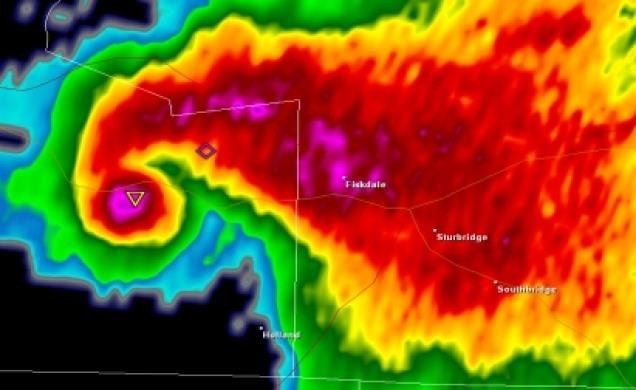-
Posts
78,778 -
Joined
-
Last visited
Content Type
Profiles
Blogs
Forums
American Weather
Media Demo
Store
Gallery
Everything posted by weatherwiz
-
That is going to be some convective line that moves through tomorrow night. Higher terrain could easily pick up a quick inch or two of snow and could be a graupel fest for many. Probably going to see a decent amount of thunder/lightning too. EDIT: should add this is ore favorable for western sections and northwest specifically
-
Thank you! This makes tremendous sense then. When I was doing EL Nino structure I found very few events which could be considered west-based.
-
I still don't fully understand Modoki EL Nino. Does this involve or incorporate SSTA's off the west coast of the US? Also, I think it gets alot harder to correlate EL Nino strength b/c of when EL Nino typically peaks and how rapidly it can weaken. One thing I find interesting is majority of EL Nino events prior to 1960 seemed to remain pretty steadfast through the winter season, but since then there has been a greater tendency for events to rapidly weaken during the late fall/early winter months. I'm actually working on trying to do breakdowns of weak, moderate, strong but finding it a bit challenging. There are also some events which peaked in the late summer/early fall, so do you classify based off peak strength or whatever the strength was maybe in the trimonthly period or two before winter (DJF)?
-
The correlation between ENSO phase and snowfall is too weak IMO to really draw any conclusions (except for maybe strong events...but even with these, the sample size is very small). We've had weak warm/cold events produce good and bad seasons and we've had moderate warm/cold events produce good/bad seasons. I mean speaking straight from a statistical standpoint, as you said weak Nino's tend to be "best" but the correlation isn't enough to say "bank on it". The correlation's seem to have done down a bit too from where they were say 10-20 years ago as the dataset expands and we've been able to expand the historical dataset through reanalysis techniques.
-
I am really hoping Saturday's warm sector doesn't turn out to be that dirty. I'm hoping to be able to watch the Bruins game outside and clean up dog poop. There is several months worth of dog poop in the yard. It's like walking across a field of land mines.
-
I know you don't do anything with prior to 1950 but I'll throw 1911-1912 in your mix as well.
-
Could even see the potential for some strong thunderstorms across NY/PA into western MA and northwest CT late Saturday!!!!
-
Thank you! Love that price…that’s what I was hoping for
-
What’s the best “dirt” to get to fill holes in the yard (like gopher holes)? Only thing I can think of is like planting soil but Lowe’s or Home Depot must have something else
-
The best bet for forecasting temperatures on days like today is using Bufkit and tossing the NAM. With Bufkit you can play around with different mixing heights which is fun to do. Miss doing that with the weather challenge
-
Cold and rainy and had some sleet. Great day to watch the Bruins and Lightning beat each other up
-
Just saw a bobcat on the backyard
-
Some of those EPS members, combined with the OP's evolution at 500 is enough to keep interest in the game
-
sweet! If I get some time in the upcoming days I want to do an average vs. average with outliers removed. Will be fun to see the difference. The differences though aren't really going to be drastic.
-
To get the true average outlier seasons should be removed from the calculation of the mean. What really sucks is I have no clue where to go anymore for historical snowfall records. The data blank from the mid 90's to early 2000's sucks and that threadex or whatever page I think that has it had completely different numbers for several stations that I had written down that the NWS had listed like 10-years ago. I wanted to compare the long-term average at all stations and then do a calculation with outliers removed and just curious to see what the difference comes out to be. BUT THE RECORD KEEPING IS ABSOLUTE TOTAL DOG SHIT
-
This is probably the type of setup we need to actually get something
-
We'll find out next week
-
GFS with a sneaky event Monday night
-
I agree with this 100%
-
If snow maps didn't exist 99.999999999% of storms in the D6-10 day range would get little, if any, attention.
-
Well started making some "headway" with EL Nino composites. Below is a list of EL Nino winters I generated using Eric Webb's Ensemble ONI and the CPC's ONI. I have yet to break down these events into strength b/c I'm not really sure what criteria to use. Majority of EL Nino events peak before the official winter season. Not sure if I want to do peak EL Nino strength or do the strength during the OND or DJF period. Also it's very challenging to do a structure breakdown...from my perspective anyways, the majority of EL Nino events look east-based, but that is using SSTA's. Maybe OLR would be a better proxy
-
Right, you never want to just take one model and run with it. Understanding which model may be performing the best in a given pattern regime can help provide some great guidance too. But I think we've become so fixated on threats in the D6-10 and beyond range these last several years that expectations have just been cut to shreds and if some D8 "threat" doesn't verify all of a sudden a model or models are trash.
-
Just b/c a model goes from "storm to no storm" and vice-versa doesn't mean a model sucks. This is one reason why I think there are just too many products available to assess. In the medium range the only products that hold any weight whatsoever are mid/upper-level. Forget what the snow maps show, forget what the QPF maps show, and forget what the SLP tracks are. All those products...are useless and pointless in the medium range. You have to understand why a model is wavering back-and-forth. In the case of this potential, there are several key pieces at hand 1) PV and associated confluence 2) Shortwave energy within the north stream You can even expand this list and focus how the energy moving into the PAC NW is influencing the evolution of the pattern downstream It is unrealistic to expect a model to be consistent or sniff these features and their exactly evolution nearly perfect in that range. There is too much chaos involved. That will never, ever, ever happen. When looking into the medium range, all you want to see is how your key features are being played out by each model while using the current pattern regime to hopefully narrow down a list of potential solutions/outcomes.
-
It's chilly 51 with no sun. Went for a walk and I got cold
-
Only Canadian I'm concerned about is the Montreal Canadiens tonight






